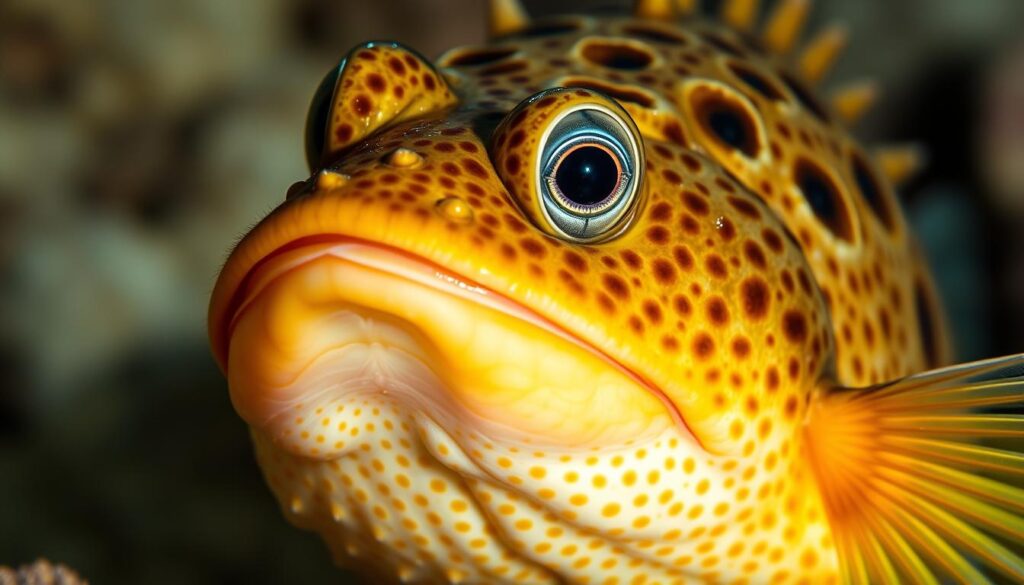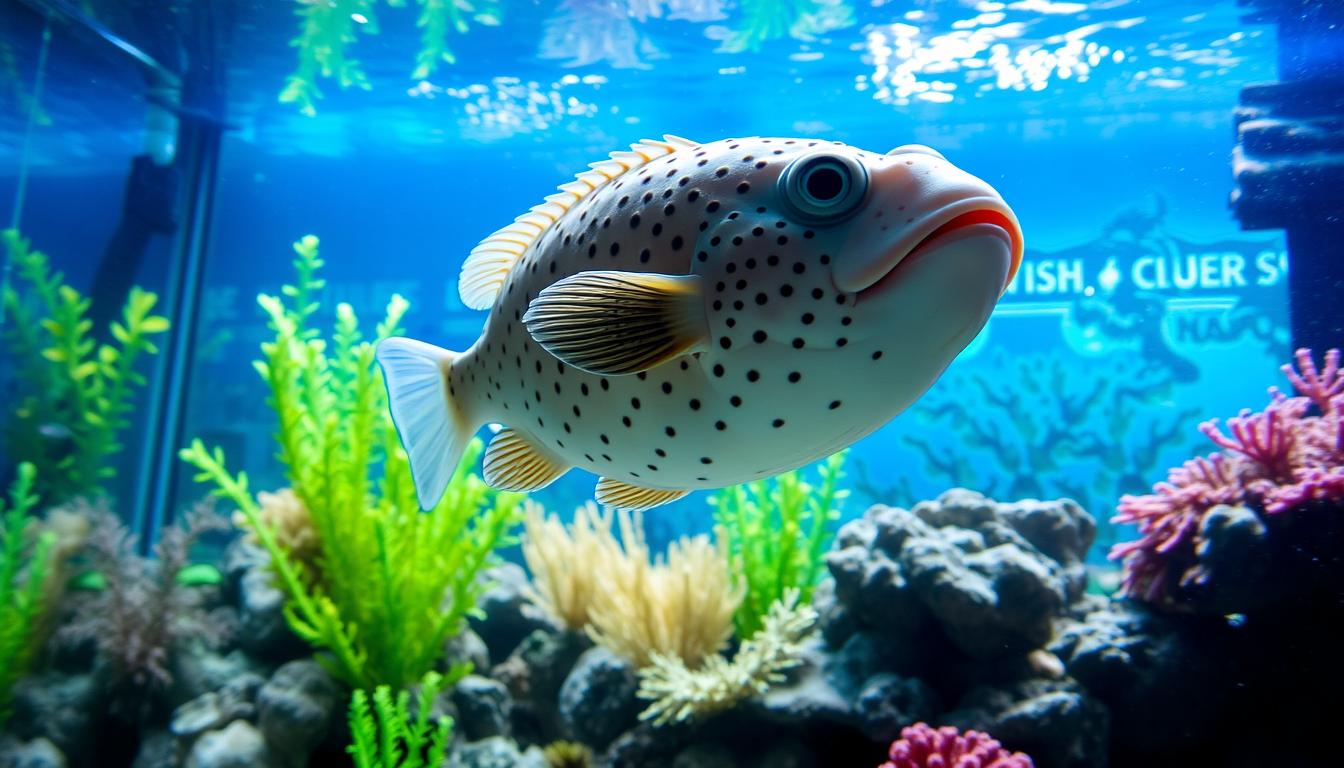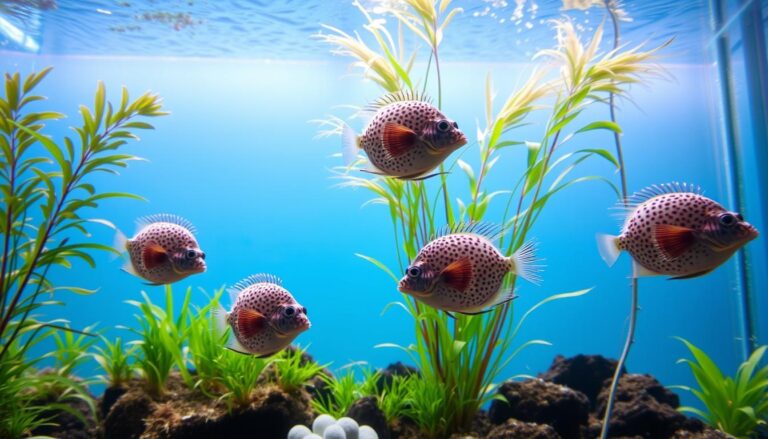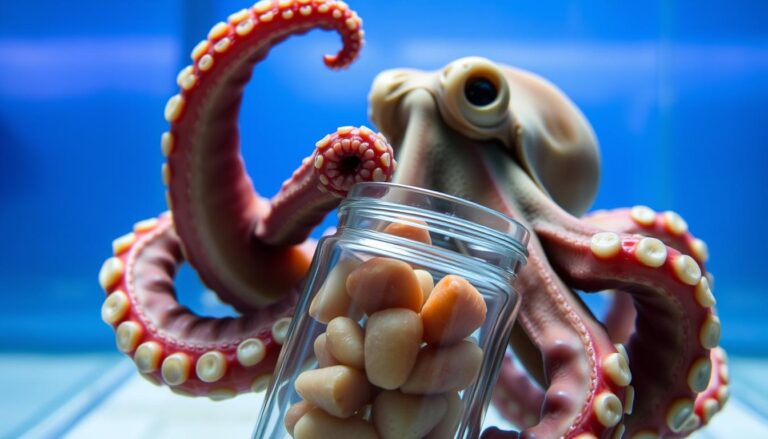Saltwater Pufferfish Care Tips: Tank Requirements and Feeding Habits”
Pufferfish are among the most fascinating marine creatures, known for their unique ability to inflate as a defense mechanism. With over 120 species, these fish range in size from just one inch to an impressive 25 inches. Their distinct beaks and vibrant color patterns make them a captivating addition to any aquarium. Despite their popularity,…
Pufferfish are among the most fascinating marine creatures, known for their unique ability to inflate as a defense mechanism. With over 120 species, these fish range in size from just one inch to an impressive 25 inches. Their distinct beaks and vibrant color patterns make them a captivating addition to any aquarium.
Despite their popularity, pufferfish require specialized attention to thrive. Their environment must mimic their natural habitat, ensuring they remain healthy and stress-free. This guide will explore essential aspects of their care, including tank setup, water quality, and dietary needs.
Key Takeaways
- Pufferfish are known for their unique inflating defense mechanism.
- They come in various sizes, from small dwarf species to larger ones.
- A tailored environment is crucial for their health and well-being.
- Proper tank setup and water quality are essential for their care.
- Their diet should match their natural feeding habits.
Introduction to Saltwater Pufferfish
With their unique traits, pufferfish have become a favorite among aquarium enthusiasts. These fish are known for their quirky behaviors and striking appearances, making them a standout in any marine setup. Their ability to puff up, combined with their intelligence, adds to their charm.

Unique Characteristics and Behaviors
One of the most fascinating features of pufferfish is their ability to inflate their bodies. They achieve this by rapidly ingesting water into their elastic stomachs, deterring potential predators. This defense mechanism is both effective and captivating to observe.
Another remarkable trait is the presence of tetrodotoxin in their tissues. This potent toxin makes them unpalatable to most predators, ensuring their survival in the wild. It’s a testament to their adaptability in their natural habitat.
Visually, pufferfish are a treat to behold. Porcupine puffers, for instance, are adorned with quills, while other species display polka-dot patterns or vibrant green hues. Their fins and body shapes vary, adding to their diversity.
These fish are also known for their intelligence. They can recognize their owners and exhibit interactive behaviors, making them a joy to keep in an aquarium.
Popularity in Marine Aquariums
Pufferfish have gained immense popularity in marine aquariums due to their interactive personalities and striking appearances. Their erratic swimming patterns and unique features make them a centerpiece in any tank.
However, keeping pufferfish comes with challenges. They are sensitive to water parameters and require a specific diet to thrive. Despite these hurdles, their charm and uniqueness make them a rewarding addition for experienced aquarists.
Essential Saltwater Pufferfish Care Tips
Creating the right environment for these unique fish is essential for their well-being. Proper care ensures they thrive in captivity, mimicking their natural habitat as closely as possible. This section explores key aspects of their care, from tank setup to addressing common challenges.

Understanding Their Natural Habitat
These fish originate from tidal mangrove ecosystems, which are rich in hiding spots and rock formations. To replicate this in an aquarium, include plenty of rockwork and caves. This setup provides security and reduces stress.
Maintaining strict water parameters is crucial. The temperature should range between 74°F and 82°F, with a pH level of 8.0 to 8.4. Specific gravity should stay within 1.005 to 1.026, and nitrate levels must remain below 10ppm.
Using crushed coral substrate helps stabilize pH levels, ensuring a balanced environment. Regular water changes, at least 25% weekly, are necessary to manage nitrate sensitivity.
Common Challenges for Beginners
One of the most common issues is overgrown teeth. These fish require a diet of crunchy foods, such as clams and snails, to naturally wear down their teeth. Without this, dental problems can arise.
Another challenge is selecting the right tank size. Smaller species need at least 30 gallons, while larger ones require 250 gallons or more. Inadequate space can lead to stress and health issues.
Proper filtration is also vital. Poor filtration can result in unstable water conditions, harming the fish. Always acclimate them slowly to avoid shock and ensure a smooth transition to their new home.
Tank Requirements for Saltwater Pufferfish
Setting up the perfect environment for these unique fish starts with understanding their needs. A well-planned tank ensures they thrive and remain healthy. This section covers essential aspects like size, water quality, and maintenance.

Minimum Tank Size and Space Needs
The size of the tank depends on the species. For example, a Valentini puffer requires at least 30 gallons, while a dog-faced puffer needs 100 gallons. Larger species, like the stars and stripes puffer, demand 250 gallons or more.
Swimming space is equally important. Tanks should have a minimum length of 48 inches for larger species. This ensures they have enough room to move freely and reduce stress.
Water Quality and Parameters
Maintaining pristine water conditions is crucial. The temperature should stay between 74°F and 82°F, with a pH level of 8.0 to 8.4. Specific gravity should range from 1.005 to 1.026.
Regular testing is essential. Ammonia and nitrite levels must remain at 0ppm, while nitrates should stay below 20ppm. Crushed coral substrate helps stabilize pH, and weekly water changes of 25% are recommended.
“Clean water is the foundation of a healthy marine environment.”
Filtration and Maintenance
Proper filtration is key to managing the bioload of these messy eaters. A combination of protein skimmers and canister filters is ideal. Aim for a turnover rate of 5-10 times the tank volume per hour.
Daily checks include feeding and observing fish behavior. Weekly tasks involve cleaning the glass and testing water parameters. UV sterilizers can also help prevent parasites.
| Species | Minimum Tank Size (Gallons) | Key Requirements |
|---|---|---|
| Valentini Puffer | 30 | Rockwork, stable pH |
| Dog-Faced Puffer | 100 | Large swimming space, protein skimmer |
| Stars and Stripes Puffer | 250 | High filtration, UV sterilizer |
Feeding Habits of Saltwater Pufferfish
Feeding these unique marine creatures requires a well-planned approach to ensure their health and vitality. Their diet must mimic their natural feeding habits, providing the right balance of nutrients and enrichment. This section explores the best foods and strategies to keep them thriving.
Live and Frozen Food Options
These fish thrive on a variety of live and frozen foods. Shelled options like clams and snails are essential for maintaining their beak-like teeth. These crunchy items help prevent overgrowth and dental issues.
Frozen shrimp, krill, and squid are excellent sources of protein. They provide the necessary nutrients for growth and energy. Rotating between these options ensures a balanced diet and prevents nutritional deficiencies.
Vegetable Supplements and Frequency
In addition to protein, these fish benefit from vegetable supplements. Nori seaweed and algae sheets are rich in vitamins and minerals. They should make up about 30% of their diet to support overall health.
Feeding should occur 2-3 times a day. A structured schedule, such as morning krill, afternoon snails, and evening veggies, works well. This routine ensures they receive all necessary nutrients throughout the day.
| Food Type | Frequency | Benefits |
|---|---|---|
| Clams | Daily | Maintains beak health |
| Shrimp | 3-4 times weekly | High protein source |
| Nori Seaweed | 2-3 times weekly | Provides essential vitamins |
Using feeding tongs can prevent territorial aggression during meals. Monitor eating duration to avoid overfeeding, ensuring they finish within 2 minutes. This approach keeps them healthy and reduces waste in the tank.
Popular Saltwater Pufferfish Species
Exploring the diverse species of marine puffers reveals their unique traits and requirements. From their striking patterns to their distinct behaviors, each type offers something special for aquarium enthusiasts. Below, we’ll dive into three popular species, highlighting their characteristics and care needs.
Valentini Puffer
The Valentini Puffer, also known as the Saddled Puffer, is a favorite among aquarists. It grows to a maximum size of 4 inches, making it suitable for tanks as small as 30 gallons. This species is semi-reef-safe but requires a diet rich in crustaceans to maintain its beak-like teeth.
Interestingly, the Valentini mimics the appearance of the Blacksaddle Filefish, a clever defense mechanism against predators. Its social structure often involves a harem, with one male and multiple females coexisting peacefully.
Stars and Stripes Puffer
Known for its striking polka-dot pattern, the Stars and Stripes Puffer is a larger species, reaching up to 18 inches in length. It requires a spacious tank of at least 250 gallons to thrive. While visually stunning, this puffer poses a risk to coral, making it unsuitable for reef tanks.
Its diet should include a mix of hard-shelled foods and vegetables to prevent dental issues. This species is also known for its curious and interactive behavior, making it a joy to observe.
Dog-Faced Puffer
The Dog-Faced Puffer is named for its unique beak structure, which it uses to prey on invertebrates. This species grows up to 13 inches and needs a tank of at least 100 gallons. Its diet should include clams, snails, and other crunchy foods to keep its beak in check.
While generally peaceful, this puffer can be territorial, so tank mates should be chosen carefully. Its vibrant fins and active swimming patterns make it a standout addition to any marine setup.
| Species | Size | Tank Requirements |
|---|---|---|
| Valentini Puffer | 4 inches | 30 gallons, semi-reef-safe |
| Stars and Stripes Puffer | 18 inches | 250 gallons, coral risks |
| Dog-Faced Puffer | 13 inches | 100 gallons, invertebrate diet |
“Each puffer species brings its own charm and challenges, making them a rewarding choice for dedicated aquarists.”
Compatibility and Tank Mates
Choosing the right companions for marine species is crucial for a harmonious tank. Compatibility ensures a stress-free environment and promotes the well-being of all inhabitants. This section explores safe pairings, reef-safe considerations, and strategies to manage aggression.
Reef-Safe Considerations
When selecting tank mates, caution is essential, especially for reef setups. Some species may nip at corals or disrupt the delicate balance of the ecosystem. For example, damselfish and gobies are generally safe, while angelfish and butterflyfish pose risks.
To test compatibility, start with inexpensive corals like zoanthids or mushrooms. This approach minimizes potential losses while ensuring the safety of your reef environment.
Aggression and Territorial Behavior
Marine species can exhibit territorial tendencies, leading to aggression in confined spaces. To manage this, introduce tank mates simultaneously during the juvenile stage. This reduces dominance issues and fosters a peaceful community.
Visual barriers, such as rock formations, can help establish territories. Multiple feeding stations also minimize competition during meals. For redirecting aggression, acrylic mirrors can be a useful tool.
| Safe Tank Mates | Risky Pairings | Management Tips |
|---|---|---|
| Clownfish, Watchman Gobies, Tangs | Slow-moving Fish, Long-finned Species | Visual Barriers, Multiple Feeding Stations |
| Damselfish, Gobies | Angelfish, Butterflyfish | Acrylic Mirrors, Simultaneous Introduction |
“A balanced tank community requires careful planning and ongoing observation to ensure harmony.”
Conclusion
Proper care ensures these unique fish thrive, offering years of enjoyment for dedicated aquarists. By focusing on the critical care triad—space, water quality, and nutrition—you can create a healthy habitat that mimics their natural environment. Species-appropriate tank setups and regular veterinary check-ups are essential for maintaining their beak and tooth health.
Advanced techniques, such as automated feeding systems, can simplify daily routines while ensuring a balanced diet. Incorporate a variety of foods to meet their nutritional needs and prevent common health issues. Resources like water testing kits and puffer-safe decor further enhance their well-being.
This guide aims to empower you with the knowledge needed for responsible ownership. With dedication and attention to detail, your aquarium can become a thriving home for these fascinating fish. Start your journey today and enjoy the rewards of keeping puffers in your marine setup.




